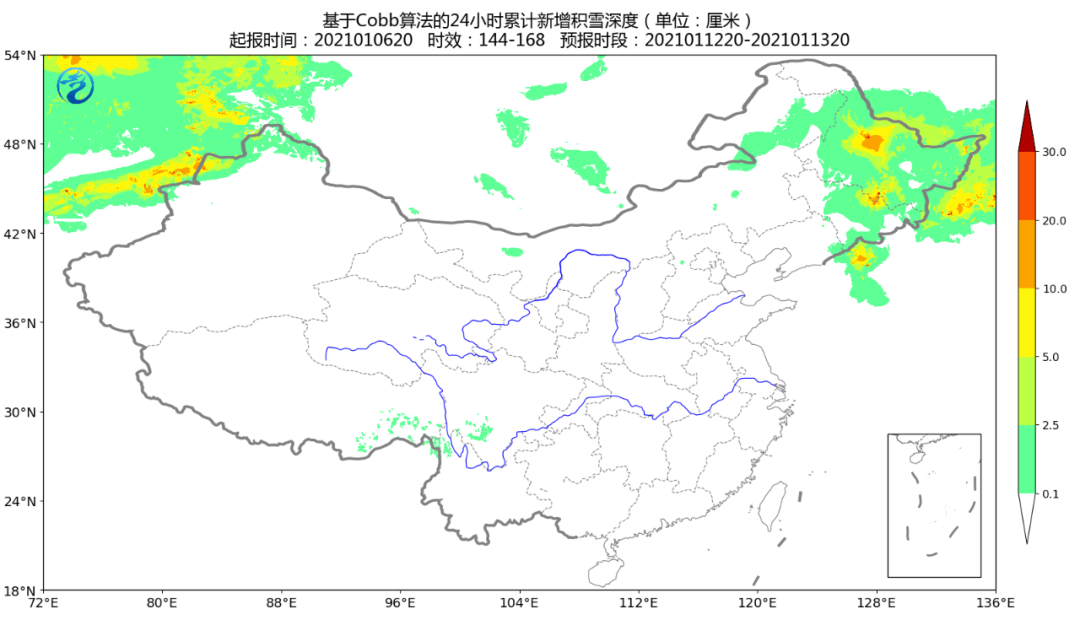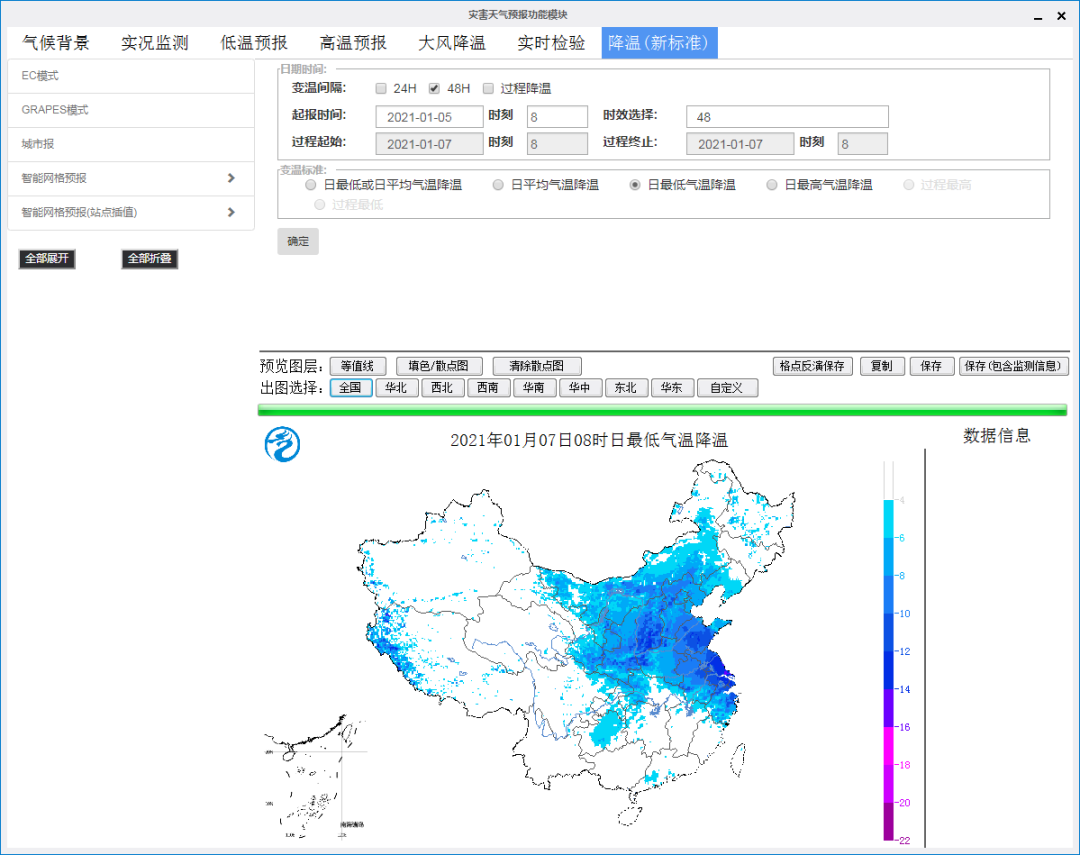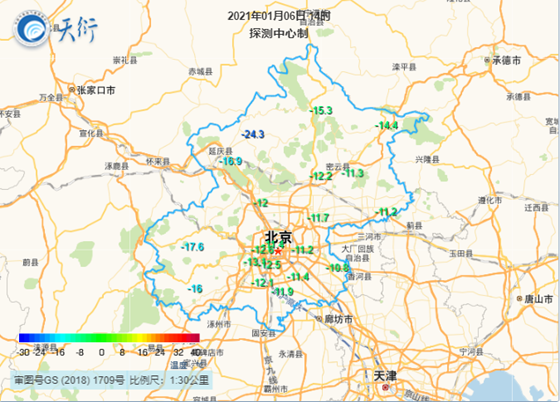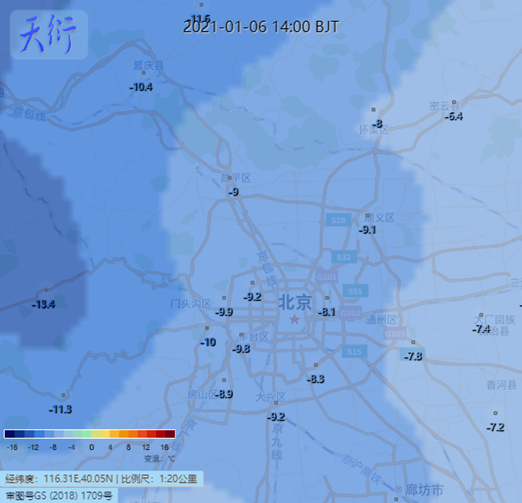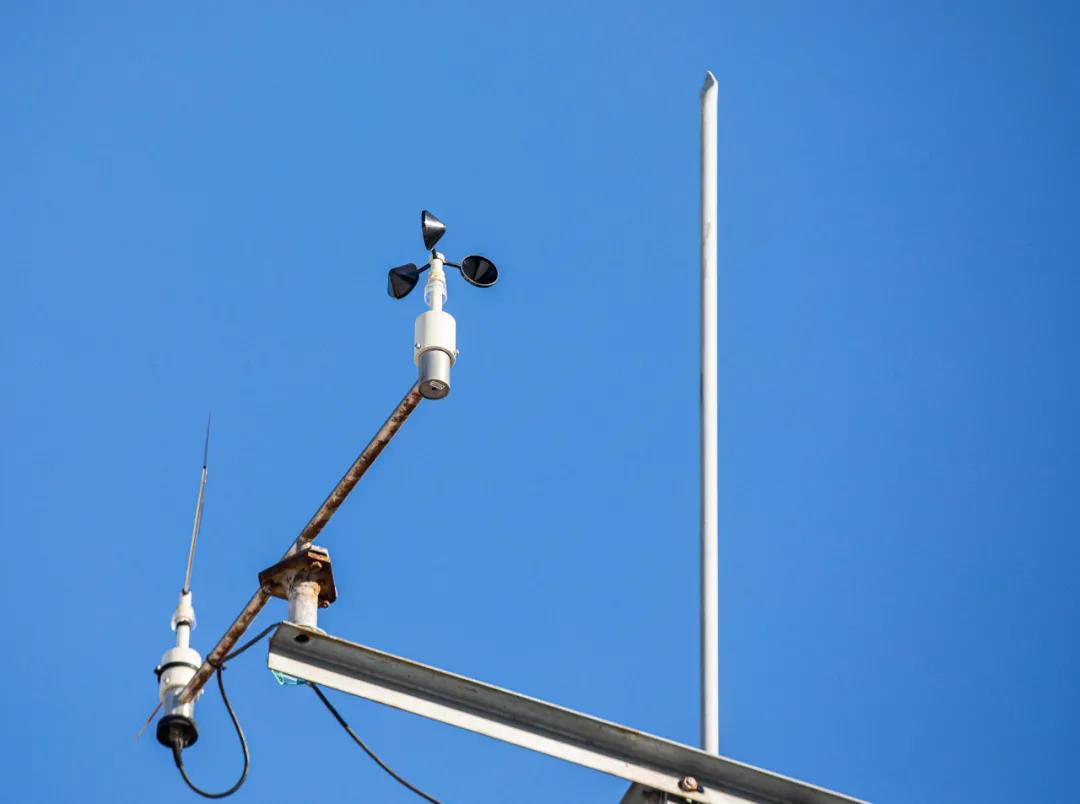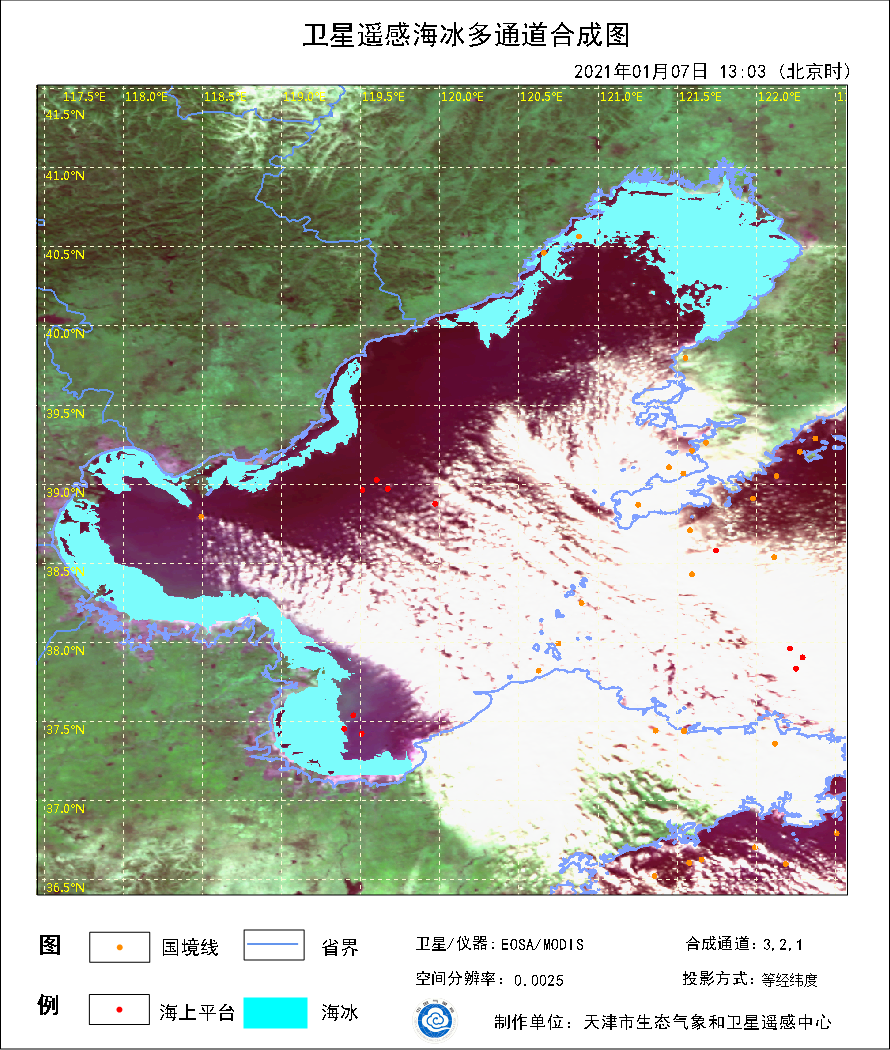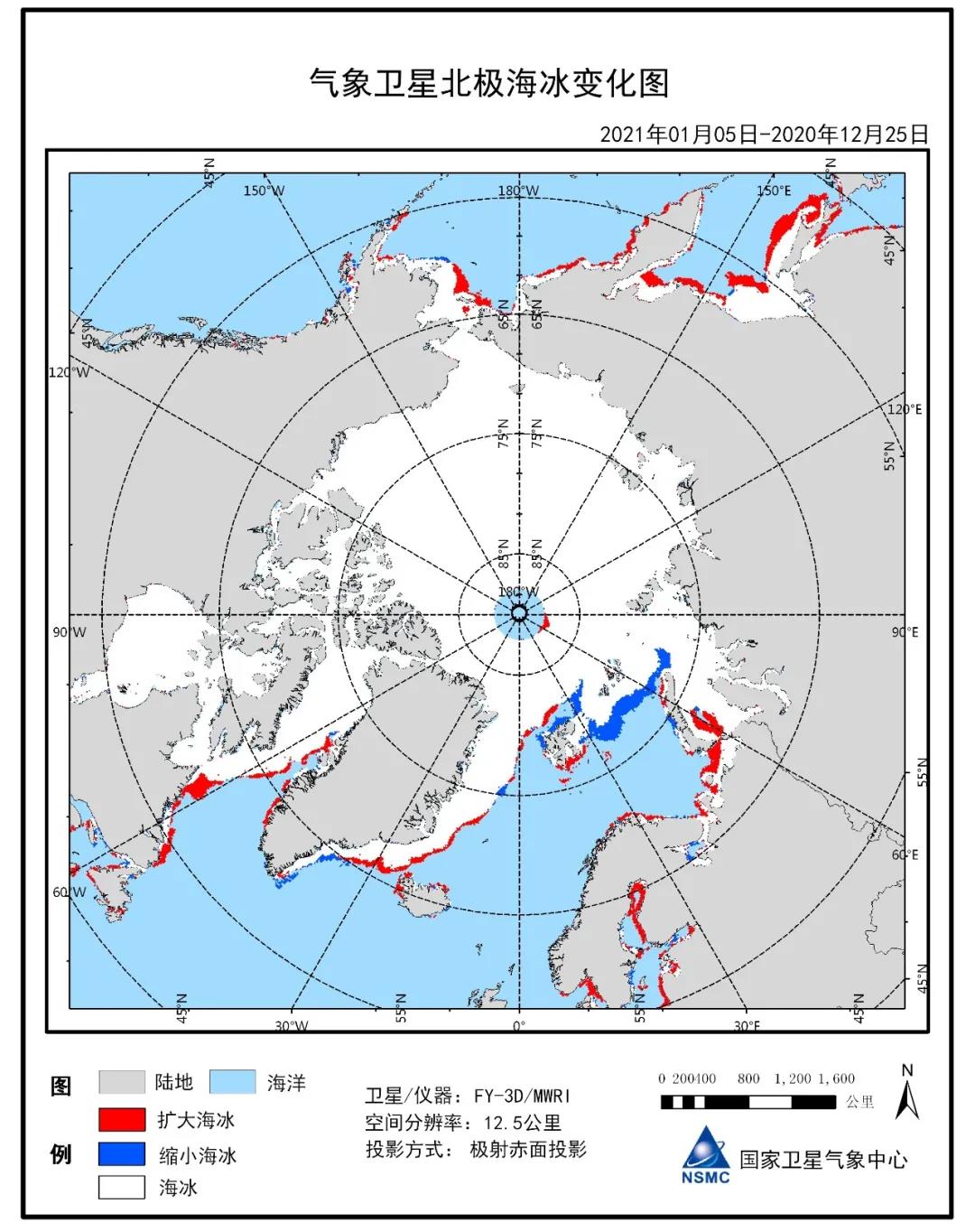Cutting-edge technologies applied in tracking cold wave in the winter of 2021
Source: China Meteorological News Press
Date: 2021/02/07
At the beginning of 2021, China ushered in the first cold wave weather process. And the strong cold air brought along large scale temperature drop and gale weather. During this weather process, meteorological science and technology has displayed its cutting-edge prowess. Let’s have a look at those sophisticated instruments which have played an instrumental role. At 6:31 p.m. on January 6, the observation showed that the temperature slumped to -17.1℃ in Beijing Nanjiao Weather Observatory, which has broken the minimum temperature record in Beijing since 2000. “Watcher” from the upper air FY-4A satellite can capture one cloud image at 5-minute interval and monitor the moving cloud system on a real-time basis. Generalist of prediction services
The newly added prediction products of snow depth National Meteorological Centre (NMC)reinforced the application of intensive observation data based on physical state, snow accumulation, microwave radiometer, and wind profile, carried out refined analysis of evolution features of atmospheric dynamics, water vapor, physical state, and snow accumulation; made corrections to modernization achievements like PTYPE physical state prediction and newly added objective prediction technology of snow accumulation; and fully harnessed technological results like circulation anomaly probability prediction, and dynamic optimum precipitation ensemble to make relevant predictions.
Functional module of severe weather prediction In the meanwhile, NMC accurately predicted two processes of sustained temperature drop based on the verification assessment and subjective and objective integrated technological results of model process temperature swings on the severe weather monitoring prediction platform. And the platform can effectively produce prediction and early warning products. During the cold wave process, Wuhan Central Meteorological Observatory relied on Tianjing real-time monitoring platform, Tianyuan integrated observation operational information-based platform and Meteorological Data Operational System (MDOS), to carry out diagnosis of observation facilities and data quality.
Monitoring Ice and Snow Based on real-scene products, National Meteorological Information Center (NMIC) has rolled out a feature of low temperature and freezing weather, which can provide data like 6-hour real-scene temperature conditions, near 24-hour national minimum temperature, near 24-hour temperature changes, and the latest information on wind direction, rain and snow, and snow depth. The feature has also launched the TOP50 ranking of stations with low temperature in the country. Currently, real-scene products made by NMIC provide the service interface of any location, and obtain over 10 kinds of real-scene data and public service products based on any longitude and latitude information. On the strength of updating grid point real-scene conditions and all kinds of monitoring data, it has provided real-scene meteorological information for the general public.
Monitoring the facilities Confronted with the first cold wave in 2021, Meteorological Observation Center of China Meteorological Administration (CMA) fully leveraged its independently developed integrated meteorological observation product system “Tianyan” to produce the minimum temperature product, temperature change product, gale product, and snow depth product of this cold wave process, kept tabs on the operation of automatic station facilities and data quality, and provided high quality data for decision-making services.
Smart instruments Since 2020, wind sensors in 237 national-level ground observation stations in 22 province of the whole country have gone through anti-freezing renovation and upgrading. During this cold wave process, the upgraded wind sensors in Shandong stood the test of the cold wave, and ensured data transmission, and the smooth operation of facilities.
Monitoring sea ice In face of the cold wave, Tianjin Municipal Meteorological Service reinforced ocean monitoring and prediction services of the sea areas in northern China, fully harnessed multi-source satellite data by FY-4A satellite, FY-3C satellite, MODIS, and Gaofen satellite, carried out quantitative assessment of sea ice conditions, conducted dynamic monitoring of sea ice development condition, projected the spatial distribution of sea ice extent, sea ice density, and underpinned safe production on the sea. Expert in low temperature prediction During the cold wave process, temperature smart grid objective prediction technology developed by Liaoning Provincial Meteorological Observatory has played a prominent role in winter temperature prediction. The technology harnessed multi-source observation data, global and regional multi-model data, and established temperature objective prediction technology in Liaoning based on AI and dynamic slide period average correction. Smart grid point temperature prediction products had a high spatial and temporal resolution, formed 5km resolution grid point prediction product covering the entire province, and markedly elevated the prediction time efficiency of the cold wave and sustained low temperature. Editor: Liu Shuqiao Previous issues
|

